|
||||||||||
| Home Nation World Business Opinion Lifestyle ChinAfrica Multimedia Columnists Documents Special Reports |
|
||||||||||
| Home Nation World Business Opinion Lifestyle ChinAfrica Multimedia Columnists Documents Special Reports |
| ChinAfrica |
| Coal for the People |
| Jungar Banner in Inner Mongolia Autonomous Region explores green development of coal resources |
| By Wei Hongchen | Web Exclusive ·2024-02-09 |
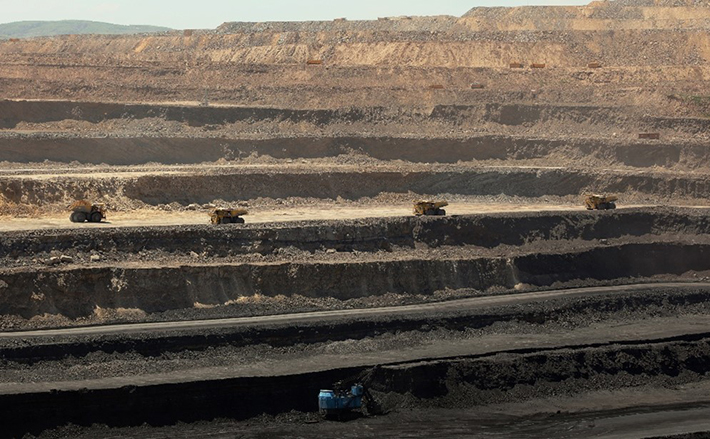
Heidaigou Coal Mine (File Photo)
Jungar Banner in north China’s Inner Mongolia Autonomous Region boasts abundant coal deposits. With proven coal reserves of 54.4 billion tonnes and potential reserves of over 100 billion tonnes, the banner itself ensures coal supplies of 25 provincial regions across China.
Given that China has committed to peak its carbon emissions by 2030 and become carbon neutral by 2060, Jungar Banner has been constantly exploring new ways for high-quality development. Through building intelligent coal mines and developing new-type coal chemical industry, it has embarked on an intelligent, high-end and green development path featuring green mining and low-carbon coal utilisation. By January, a total of 43 intelligent coal mines have been built in the banner.
Intelligence takes the lead
While most people are getting ready to celebrate the Spring Festival, the most important festival for Chinese people, the Heidaigou coal mine in the banner is busy as usual. Big machines such as electric shovels, drillers and bulldozers are operating in an orderly way, and many yellow autonomous mining trucks are loading, moving and unloading rocks and raw coal. A subsidiary of Zhunneng Group under CHN Energy Investment Group, the mine can produce 34 million tonnes of coal annually, making it among the largest open-cut coal mines in China by production capacity.
In March 2020, the National Development and Reform Commission and seven other ministries and commissions jointly set the goal of realising intelligent operation in large-scale coal mines and high-risk coal mines, and intelligent and continuous operation and automatic transportation in open-cut mines by 2025.
Supported by the policy and new technologies such as 5G, big data and artificial intelligence, the Heidaigou mine, covering an area of 50.33 square km, began to switch to intelligent operation.
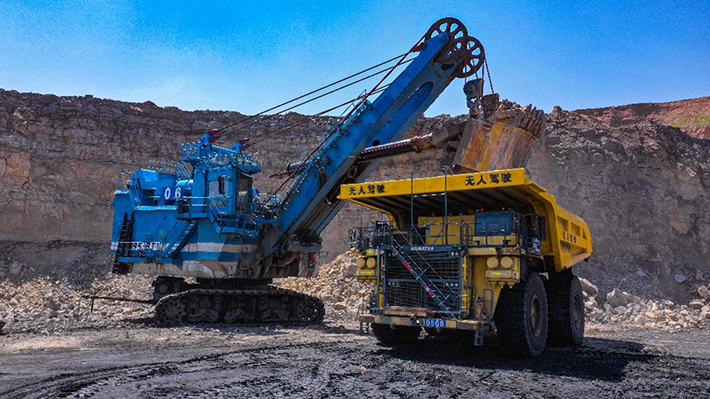
A crane is loading coal on an autonomous truck (yellow) (File Photo)
According to Cui Wen, head of Electromechanical Management Department of Zhunneng Group, the working efficiency of autonomous coal trucks in the mine has been improved to more than 85 percent of the trucks with drivers.
At the managing centre of the Heidaigou mine, one can precisely dispatch autonomous mining trucks and adjust these trucks’ parameters and running routes by simply clicking on the intelligent dispatch and management platform. According to Jin Xin, project manager of the mine, the platform can effectively solve the congestion caused by long loading and unloading time, raising operation efficiency and safety. The 48 5G base stations covering the whole mining area aid the operation of these autonomous mining trucks.
Du Peiwen, 51, is a native of Jungar Banner. In 2006, he joined the mine as a driver of mining trucks in Heidaigou. Because of high production volume, he had to work overtime all year round. After the introduction of autonomous mining trucks, he retired as a mining truck driver in October 2023, and is now in charge of refuelling and servicing autonomous mining trucks.
“Our intelligent mining system can liberate workers from heavy workload, and they can work in safer places,” said Zhang Xin, deputy director of the Publicity Department of Zhunneng Group.
Smart team
“This is our 3D configuration metaverse scenario, the first of its kind across China. Through 3D modelling, we can create models of all the constructions, equipment and lanes of the mine, so as to realise all-round transparent management, all from the comfort of the office,” said Wei Zhaoheng, AI operation engineer at the Longwanggou coal mine of Guoyuan Mining Development Co. under China Datang Corp.
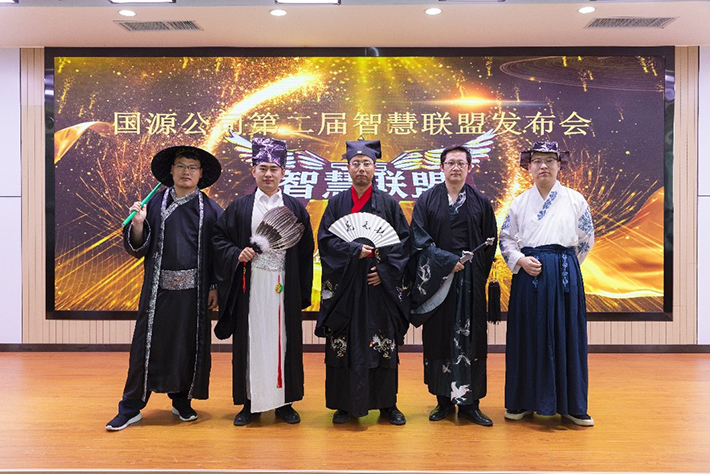
Members of Smart Alliance, wearing the costumes of swordman of ancient China, report their latest research outcomes of intelligent mining in the form of a drama in December 2022 (Courtesy)
On 1 July 2020, Guoyuan established its smart mining team – Smart Alliance, the first in the coal mining industry. “In the past, mining enterprises were dependent on equipment manufacturers for a switch to smart mining, because they controlled the core technologies of the software system,” said Zhang Haijun, head of Smart Alliance. “To change the situation, we must foster our own high-calibre and high-quality talents and have our own intelligent property rights. Hence, we established our Smart Alliance.”
The Smart Alliance initially consisted of 34 young people chosen from 596 university students working in different departments of the mine with diverse educational backgrounds. Wei, a Gen-Z student from the Inner Mongolia University of Technology, joined Longwanggou Mine as a common worker in 2018, and moved up to the position of engineer thanks to the Smart Alliance.
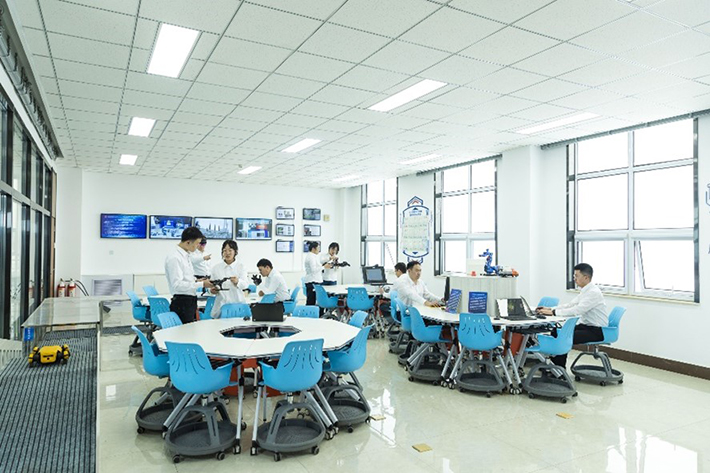
Members of the Smart Alliance hold an annual technology exchange meeting in the AI Experience Centre in March 2022 (Courtesy)
Thanks to the cross-discipline approach to management, the alliance has now expanded to 102 members, all of whom are frontline workers. With an average age of 32, their majors include mining engineering, software engineering and computer networking, among others.
So far, the Smart Alliance has launched 126 sci-tech projects in areas such as AI, big data and robot development, 96 of which have been put into service. The alliance has also applied for 12 patents. In the Longwanggou mine where the scale of intelligent operation has exceeded 91 percent, the fruits of the Smart Alliance can be seen everywhere.
Appreciation of the coal value
Based on its advantage of abundant coal reserves, Jungar Banner has expanded the production chain and now embarked on the new path of utilising coal in a clean, efficient and comprehensive way.
In the alkene project workshop of Inner Mongolia Jiutai New Material Co. Ltd., black raw coals are first gasified through chemical processing, and then turned into methanol. After that, white polypropylene is produced.
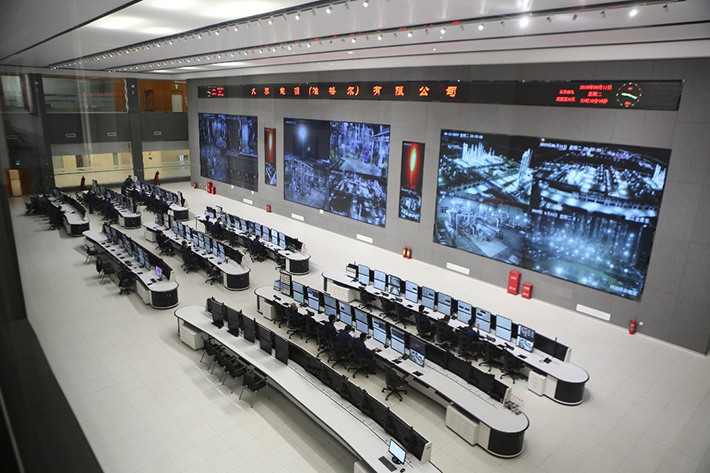
Control centre of Jiutai Energy (Jungar) (Courtesy)
Jiutai is one of the representative coal chemical enterprises in Jungar Banner. Jiutai launched the alkene project in 2019, with an annual production capacity of 600,000 tonnes. It mainly produces polyethylene, polypropylene and coal-based new materials such as butadiene and butene, with daily production of 1,800 tonnes. According to Tang Zhongjiu, assistant general manager of Jiutai, alkene products can be seen everywhere in life, such as medical supplies, auto parts, lithium batteries and clothes.
In the past, plastic production relied heavily on oil. Using coal-based materials to replace oil products can reduce China’s reliance on oil imports. More importantly, no carbon dioxide is emitted during the production of coal-based new materials. In addition, the cinder can be used as construction material.
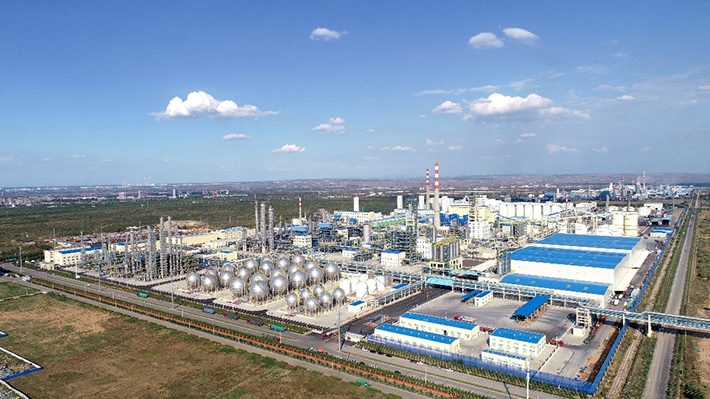
A view of Jiutai Energy (Jungar) (Courtesy)
At the Pilot Base of Coal-Based Nano-Hydrocarbon Fuel under Zhunneng Group, black coal is miraculously being turned into what is considered “green gold.” Yuan Duo, deputy director of Zhunneng’s coal-based nano-hydrocarbon workshop, showed the media the thick black fluid called coal-based nano-hydrocarbon fuel. This is a new type of clean fuel that can be used for power generation to effectively reduce coal consumption and carbon dioxide emission.
The fuel can also be used to power mining trucks in the Heidaigou mine. These trucks now consume nearly 5 tonnes of diesel a day. If the low-price coal-based nano-hydrocarbon fuel can be used in these trucks in the future, the transportation cost will be further reduced.
|
||||||||||||
| About Us | Contact Us | Advertise with Us | Subscribe |
| Copyright Beijing Review All rights reserved 京ICP备08005356号-5 京公网安备110102005860号 |